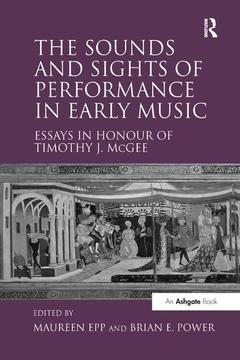The Sounds and Sights of Performance in Early Music Essays in Honour of Timothy J. McGee
Auteur : Epp Maureen
Coordonnateur : Power Brian E.

Date de parution : 11-2016
15.6x23.4 cm
Date de parution : 10-2009
15.6x23.4 cm
Thème de The Sounds and Sights of Performance in Early Music :
Mots-clés :
Young Man; american; Gautier De Coincy; musicological; Victimae Paschali Laudes; society; Vincenzo Galilei; timothy; Book III; mcgee; Fortuna Desperata; howard; Miracles De Nostre Dame; mayer; Enharmonic Genera; brown; Salve Sancta Parens; gautier; Hildegard’s Music; coincy; Hermannus Contractus; dance history; Faenza Codex; Italian dance treatises; Diatonic Genus; music iconography; Conrad Paumann; French popular song repertory; Parisian Chanson; Gothic Voices; Cd Liner Note; Accademia Del Disegno; Public Dance Performances; Paris Manuscripts; Accademia Degli Alterati; Fifteenth Century Italy; Cantus Firmus; Le Istitutioni Harmoniche; Baccio Bandinelli



